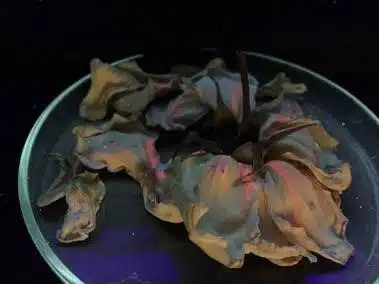Joseph J. Richardson – University of Melbourne
Nanotechnology-infused plants could monitor and improve air quality in our cities, according to Australian researchers.
Joseph Richardson of the University of Melbourne has used an ancient flower-dyeing technique to grow advanced nanomaterials inside plants to detect and absorb pollution. These bionic plants act like sponges that soak up toxic waste and heavy metals.
At the same time, the plants absorb UV rays and glow in the dark. The glow is an air quality indicator: a weaker glow means the plant is encountering more pollutants.
Working with colleagues at UNSW and CSIRO, Joseph has tested the technique on several plants including water lilies, grass, and roses.
“One day we could have living cities where the buildings are covered with enhanced plants,” Joseph says. “At a glance, they’ll tell us about the environment, while protecting us from the sun and cleaning up pollution.”
Image: A bionic rose still glowing red even after it’s been dried for scientific analysis. Credit: Joseph J. Richardson





 Fresh Science is on hold for 2022. We will be back in 2023.
Fresh Science is on hold for 2022. We will be back in 2023.